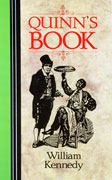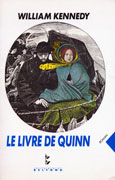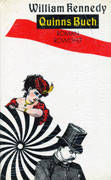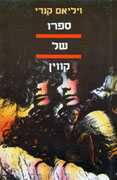QUINN'S BOOK(1988)
Kennedy continued to expand his open-ended Albany Cycle. While the first three novels in the cycle unfold in a Depression-era setting, the next three explore various periods in the city’s history. Thomas Flanagan wrote in the New York Review of Books thatQuinn’s Book (1988) “reaches out from Albany to an impressionistic nineteenth-century America, a land of slavery and warfare and haunted (rivers)” (Thomas Flanagan, New York Review of Books, 4/25/02) and follows the picaresque adventures of a Phelan ancestor, Daniel Quinn.
The Boston Globe called the novel a “book of wonders and sweetness, magic and horrors, it immerses itself in the marvelous … Touching and vivid and comic.”
“a tour de force of historical fiction driven by a visionary imagination …"
— Charles Fanning
|
Charles Fanning described Quinn’s Book as “a tour de force of historical fiction driven by a visionary imagination … Quinn’s Book rings freshly because it is the book of a gifted writer who is in love with words—their variousness, power, and capacity to comfort, dazzle, and terrify. Discovering this love turns out to be the substance of Daniel Quinn’s progress to epiphany as well … Quinn learns to oppose suffering and injustice by observing and chronicling them … Quinn’s Book is a writer’s book, from the thrill of wonder and control that the young boy feels in writing his first sentence, to a journalistic career that culminates in fame as a war correspondent, to the ultimate breakthrough into the heady, open air of fiction … Through the transforming power of his imagination, the novelist turns the typical nineteenth-century, famine-generation plot line into a quest for meaning through art, one that on some level surely stands for his own career. At the same time, the sheer joy in using words that Quinn discovers is here embodied in Kennedy’s style, in the newly minted nineteenth-century cadences and flourishes that somehow manage to express an authentic awakening to the power of love and (art).” (Charles Fanning, The Irish Voice in America, Lexington: University Press of Kentucky, 2000, p.352-356.)
Quinn's Book was published in England, France, Germany and Israel.



